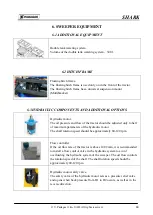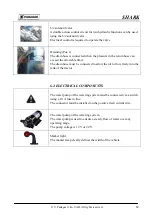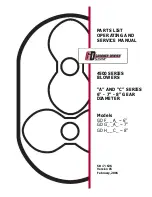
SHARK
© V. Padagas ir ko, UAB. All rights reserved.
6
- Malfunctioning of the equipment
- Inefficiency of the described methods of putting into service and repair works
- Damage to persons due to mechanical and chemical effects
- Damage to the environment due to hydraulic oil leakage
2.4 PRINCIPLES OF SAFE OPERATION
It is mandatory to observe the safety guidelines described herein, the applicable national / local
regulations on preventing accidents, as well as the rules relating to the workplace, operation and
safety.
It is mandatory to observe occupational safety rules and regulations on preventing accidents,
which are determined by responsible professional associations.
The manufacturer's safety instructions must be taken into account.
When working and moving on public roads, follow the applicable regulations and road traffic
rules as well as the manufacturer's instructions.
2.5 SAFETY INSTRUCTIONS FOR THE USER / OPERATOR
- Before starting the work, go through all the devices, connectors and their functions. It is too
late to do that after the sweeper operation has been started.
- Users’ clothing should be tight-fitting. Avoid loose clothing.
- Before operation, check the stability and safety of the seat with regard to the method of
fitting, and whether it is not damaged. Also, check if the hydraulic hoses are in place, as the damage
may occur if bent or under load.
- Before mounting or removing the hoses, place the fasteners in their correct position.
- Adhere to the permissible axle loads, overall weight and transport dimensions. Check and
attach the transport equipment – lights, warning devices and protective devices, if any.
- If in any position the light fitted to the trusses is tucked away / hidden, additional lamps must
be fitted.
- When connecting the sweeper to the tractor, the suspension must be adjusted according to the
level indicators (Fig. 1).




































